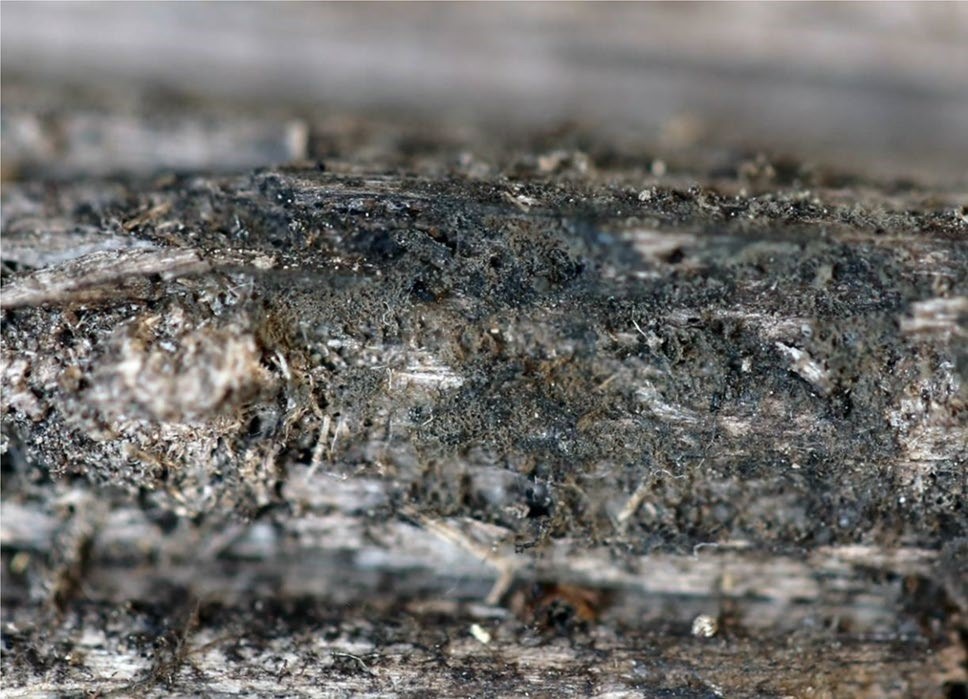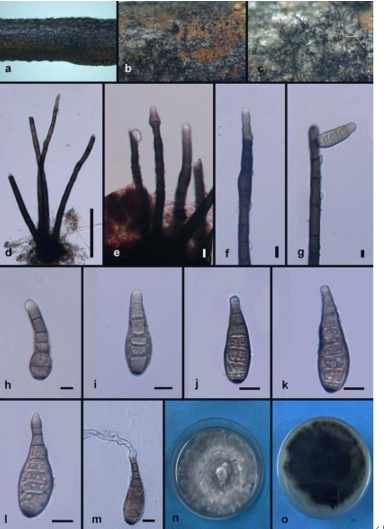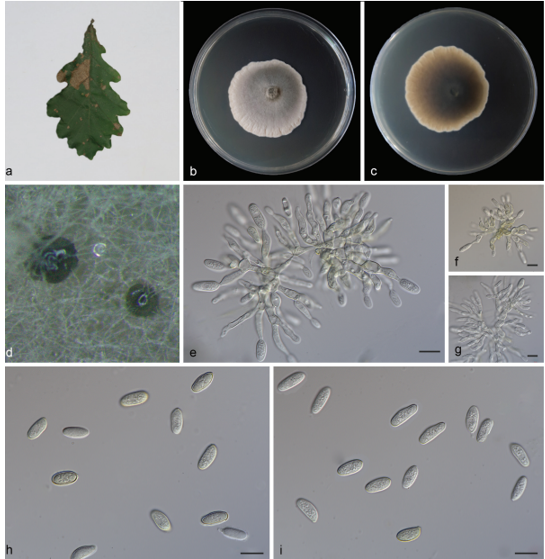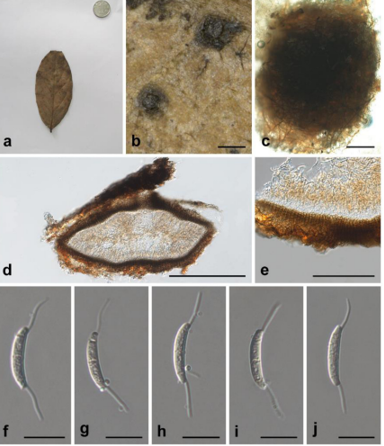Tomentella brevis H.S. Yuan, X. Lu & Y.C. Dai 2020
Index Fungorum number: IF555630; Facesoffungi number: FoF 05605
Holotype: CHINA, Jilin Province, Changbaishan Nature Reserve, on fallen angiosperm branch, 7 August 2016, Yuan 11328 (IFP 019249, holotype); on rotten angiosperm stump, 7 August 2016, Yuan 11332 (IFP 019250).
Morphological description
Basidiocarps annual, resupinate, adherent to the substrate, mucedinoid, without odour or taste when fresh, 0.5–1 mm thick, discontinuous. Hymenophoral surface granulose, brownish beige to greyish brown (6E3–6F3) and concolorous with subiculum when dry. Sterile margin often determinate, farinaceous, concolorous with hymenophore. Rhizomorphs present in subiculum and margins, 25–40 μm diam; rhizomorphic surface more or less smooth; hyphae in rhizomorph monomitic, differentiated, of type C; central hyphae with both clamps and simple septa, somewhat enlarged, thickwalled, unbranched, 3–4 μm diam; hyphae outer part of rhizomorphs with both clamps and simple septa, slightly thick walled, unbranched, 2–2.5 μm diam; pale-brown in KOH, acyanophilous, inamyloid. Subicular hyphae monomitic; sterigmata 2–3.5 μm and 1–1.5 μm diam at base. Basidiospores slightly thick-walled, (4.5–)5–6.5(–7) × (4–)4.5–5.5(–6) μm, L = 5.93 μm, W = 4.83 μm, Q = 1.17–1.23 (n = 60/2), subglobose to bi-, tri- or quadra-lobed in frontal and lateral views, echinulate, pale brown in KOH and distilled water, cyanophilous, inamyloid; echinuli usually isolated, sometimes grouped in 2 or more, up to 1 μm long.
Habitat: On fallen angiosperm branch.
Distribution: In China.
GenBank Accession: ITS: MK211746, MK211747; LSU: MK446340, MK878396.
Notes: The fuscous black, mouse grey or greyish sepia, continuous basidiocarps of Tomentella botryoides are similar to T. brevis. In addition, they also share some other characteristics: clamped hyphae, clavate basidia, the presence of rhizomorphs and the absence of cystidia. However, T. botryoides differs from T. brevis by having pelliculose basidiocarps separable from the substrate, a byssoid sterile margin and subglobose to bi-, tri-lobed basidiospores (Kõljalg 1996; Daemmrich 2006). T. lateritia Pat. resembles T. brevis by having continuous basidiocarps adherent to the substrate, clamped hyphae, clavate basidia and the absence of cystidia. But, the former species is differentiated by brick or umber basidiocarps with a granulose hymenophoral surface, subglobose to bi-lobed basidiospores and the absence of rhizomorphs (Kõljalg 1996; Daemmrich 2006; Melo et al. 2006).
Reference: Hai‑Sheng Yuan1,2· Xu Lu1,2 · Yu‑Cheng Dai3 ·

A basidiocarp of Tomentella brevis (IFP 019249, holotype)









